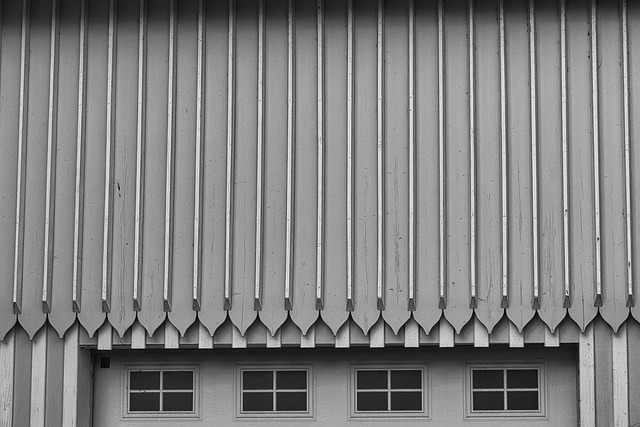Before installing a roofing system, understanding specific needs—including climate, budget, and architectural style—is crucial. Professionals tailor solutions with durable, aesthetically pleasing materials like metal or eco-friendly tiles. On-site assessments ensure local code compliance and optimal design for each project. Skilled installers follow meticulous processes, prioritizing safety and quality control during a rigorous installation. Regular maintenance, including annual inspections and prompt issue resolution, extends the lifespan of roofing systems. Roofing services integrate high-quality materials and expert care to preserve structural integrity and aesthetic appeal over time.
“Roofing System Design and Installation: A Comprehensive Guide to Expertly Protect and Enhance Your Space. From understanding your unique roofing needs, including the suitability of various roof types, to navigating material choices for optimal longevity and aesthetics, this article covers it all. We delve into design considerations that blend functionality with style, explore installation best practices ensuring safety and quality control, and offer essential maintenance tips. Discover expert advice on roofing services tailored to your requirements.”
Understanding Your Roofing Needs: Types of Roofs and Their Suitability

Before diving into roofing system design and installation, it’s crucial to understand your specific roofing needs. Different types of roofs cater to varying architectural styles, climates, and budgets. For instance, pitched roofs are common in areas prone to heavy snowfall, thanks to their steep angles that allow snow to slide off easily. Conversely, flat roofs are more suitable for modern buildings in urban settings, offering a minimalist aesthetic but requiring additional insulation against extreme temperatures.
When considering roofing services, evaluate factors like the size and shape of your roof, local weather conditions, energy efficiency goals, and your budget. This assessment will guide the selection of materials—from traditional shingles to durable metal or eco-friendly tiles—ensuring a long-lasting, weatherproof, and visually appealing finish that aligns with your unique requirements.
Design Considerations: Creating a Durable and aesthetically Pleasing Roofline

When designing a roofing system, the primary goal is to create a durable and aesthetically pleasing roofline that enhances the property’s overall appeal. This involves careful consideration of various factors such as climate conditions, local building codes, and the architectural style of the structure. Professional roofing services often begin with an on-site assessment to understand the unique challenges and requirements of each project. For instance, in regions with heavy snowfall, a steeper roof pitch might be recommended to shed snow more efficiently, while coastal areas may demand specific materials to withstand strong winds and salt air exposure.
Aesthetically, the roofing design should complement the surrounding landscape and architectural features. This could involve choosing from a range of roofing styles like traditional pitched roofs, flat roofs with green amendments, or modern metal panels. Incorporating energy-efficient materials, such as reflective tiles or high-insulation underlayments, not only contributes to the roof’s longevity but also reduces heating and cooling costs, making it an environmentally friendly choice that aligns with today’s sustainability trends in roofing services.
Choosing the Right Materials for Longevity and Efficiency

When designing and installing a roofing system, selecting the appropriate materials is paramount for both longevity and efficiency. The right choice can significantly impact energy bills, maintenance requirements, and the overall durability of your roof. For instance, opting for high-quality, weatherproof materials like metal or asphalt shingles ensures protection against harsh elements, enhancing your home’s resilience.
Moreover, considering environmentally friendly options such as recycled materials or energy-efficient variants not only reduces your carbon footprint but also provides long-term benefits. Professional roofing services should guide you in picking materials suited to your climate and architectural style, ensuring a robust and sustainable roof that stands the test of time.
Installation Process: Step-by-Step Guide to Professional Roof Fitting

The installation process for a new roofing system is a meticulous task, requiring skilled professionals and high-quality materials to ensure longevity and durability. Here’s a step-by-step guide to understanding the professional roof fitting process:
1. Preparation: The first stage involves thorough preparation of the roof deck. This includes inspecting the existing structure, repairing any damage or rot, and ensuring the surface is clean and dry. A protective barrier, like underlayment, is installed to shield the roof from moisture intrusion during the initial stages of construction.
2. Shingling/Tile Fitting: Next, roofing professionals begin laying the chosen roofing material—shingles or tiles—in a specific pattern. For shingles, this often involves starting at the bottom edge of the roof and overlapping each course by one-third of the shingle width. Tiles are typically installed with a gap between them to allow for expansion and contraction. A row of nails or screws secures each layer, ensuring stability.
3. Flashings and Ventilations: As the installation progresses, flashings—thin sheets of metal—are strategically placed to seal joints and penetrations like chimneys and vents. These critical components prevent water from seeping into the roof structure. Additionally, ventilation systems are installed to regulate attic temperatures, enhancing energy efficiency.
4. Final Touches: The final steps include installing ridge caps or shingles at the roof’s peak for protection and aesthetics, securing any loose materials, and performing a thorough inspection to guarantee the new roofing system meets safety standards and is fully functional. Professional roofing services ensure that each stage is executed accurately, resulting in a robust and protective barrier against the elements.
Ensuring Quality Control and Safety Measures During Installation

When it comes to roofing system installation, quality control and safety are paramount. Reputable roofing services employ rigorous inspection protocols at every stage of the process to ensure structures meet industry standards and regulations. This includes meticulous material checks, structural integrity assessments, and adherence to safety best practices for both workers and homeowners.
Safety measures such as secure scaffolding, proper use of personal protective equipment (PPE), and adherence to fall prevention guidelines are non-negotiable. By prioritizing these aspects, roofing services not only safeguard against potential hazards but also guarantee the longevity and reliability of the completed roofing system.
Maintenance Tips: Extending the Lifespan of Your Roofing System

Extending the lifespan of your roofing system isn’t just about occasional replacements; it’s a continuous process that involves regular maintenance. A robust maintenance routine can prevent costly repairs and ensure your roof stays in top shape for years to come. Start by inspecting your roof at least twice a year, looking out for signs of damage like missing or damaged shingles, leaks, or mold growth. Addressing these issues promptly is crucial to avoiding further complications.
Beyond regular checks, keeping your roofing system well-maintained involves simple yet effective steps such as cleaning gutters and drains to prevent water buildup, sealing cracks and gaps, and ensuring proper ventilation. Using high-quality materials during installation also plays a significant role in longevity. Turn to expert roofing services for thorough inspections, repairs, and replacements to ensure your roof maintains its structural integrity and aesthetic appeal over time.
